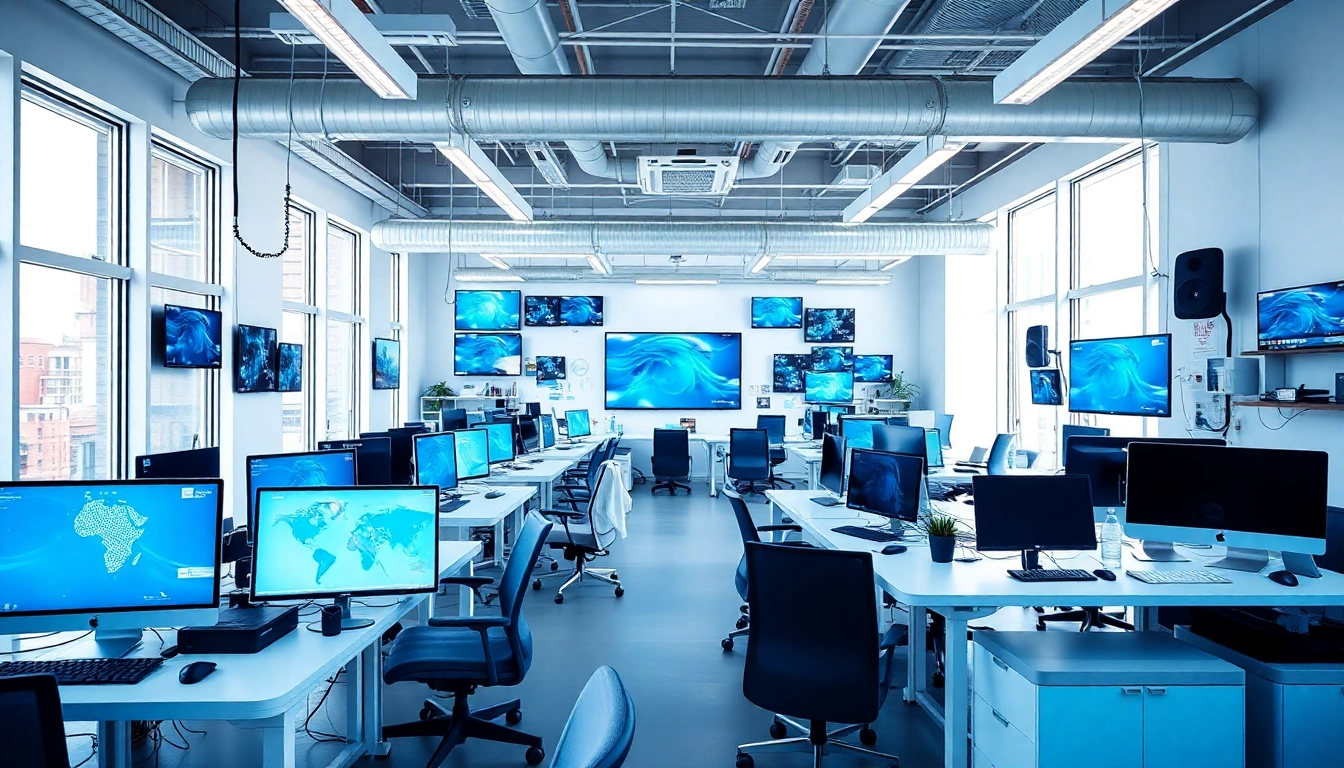10 Key Aspects of Technology Transforming Our Daily Lives
Understanding Technology: Definition and Basics
Technology, in its broadest sense, encompasses the tools, systems, methods, and processes developed through scientific knowledge to solve problems and improve the quality of human life. Defined by technology as “the use of science in solving problems,” it underpins almost every aspect of modern existence, from communication to healthcare, and manufacture to entertainment. Understanding the multifaceted nature of technology not only enhances our comprehension of its impact but also equips us to navigate its complexities more effectively.
The Evolution of Technology
The journey of technology is as enlightening as it is intricate. It traces back to early human innovations such as the wheel and fire, progressing through the ages of the Industrial Revolution, the Digital Revolution, to today’s era of Artificial Intelligence (AI) and biotechnology. Each phase introduced groundbreaking inventions, from steam engines to computers, significantly altering the fabric of society. The information age has seen an unprecedented acceleration of advancements, with technology increasingly becoming interwoven into our daily lives. For instance, the Internet has transformed how we communicate, work, and learn, while smartphones have revolutionized access to information and connectivity.
Key Components of Modern Technology
Modern technology is characterized by several key components, including hardware, software, data, and networks. Hardware refers to the physical devices such as computers, smartphones, and satellites. Software comprises the applications that run on these devices, ranging from operating systems to complex applications used in various industries. Data serves as the backbone of today’s tech landscape, driving decisions and strategies through analytics and AI. Networks, including the internet and intranets, enable the interconnectivity of devices and systems, allowing for seamless communication and collaboration across the globe.
How Technology Influences Everyday Life
The influence of technology on daily life cannot be overstated. From the moment we wake up to the time we go to bed, technology shapes our routines. Smart home devices control our environments, fitness trackers monitor our health, and social media keeps us connected. Moreover, technology facilitates education and learning through online resources and e-learning platforms, making knowledge accessible like never before. In the workplace, tools like project management software and collaboration platforms enhance productivity and efficiency, illustrating how integrated technology is in both personal and professional settings.
Categories of Technology: Exploring Different Types
Information Technology: More Than Just Computers
Information technology (IT) is often misconceived as synonymous with computers. However, it encompasses a broad range of technologies that facilitate the creation, storage, exchange, and utilization of information. This includes not only computers and software but also telecommunications, data management systems, and more recently, cloud computing services that allow for significant scalability and flexibility. The IT sector is essential for businesses of all sizes, providing tools that streamline operations and enhance communication.
Communication Technology: Connecting People
Communication technology plays a vital role in bridging gaps between individuals, businesses, and communities. Through platforms like email, messaging apps, and social media, it has redefined how we interact with one another. Furthermore, advancements in video conferencing and VoIP technologies have rendered distance less of a barrier, allowing for real-time communication across the globe. The rise of communication technology fosters collaboration and enables diverse cultural exchanges, enriching society.
Industrial Technology: Revolutionizing Production
Industrial technology refers to the application of science and engineering principles to produce goods and services efficiently. The integration of automation, robotics, and the Internet of Things (IoT) into manufacturing processes has enhanced operational efficiency, reduced costs, and improved product quality. Technologies such as 3D printing and AI-driven predictive analytics are reshaping industries, allowing for customized production and smarter resource management, further pushing the limits of what’s possible in production and logistics.
The Benefits of Embracing Technology
Increased Efficiency and Productivity
One of the most significant advantages of technology is its ability to enhance efficiency and productivity. By automating mundane tasks and improving workflows, technology allows individuals and organizations to focus on higher-level activities. For example, customer relationship management (CRM) systems streamline interactions with clients, enabling faster response times and more personalized service. Additionally, analytics tools provide valuable insights that drive decision-making, allowing businesses to pivot strategies based on real-time data.
Enhancing Quality of Life Through Technology
Technology has dramatically improved our quality of life. Innovations in healthcare, such as telemedicine and robotic-assisted surgeries, have improved patient outcomes and accessibility to medical care. Smart technologies in homes promote energy efficiency and convenience, while educational technologies provide opportunities for personalized learning experiences. Moreover, advancements in assistive technologies empower individuals with disabilities, enhancing their independence and integration into society.
Technology as a Catalyst for Innovation
Innovation is intrinsically tied to technology. New technologies create opportunities for creative solutions to persistent problems, stimulating economic growth and development. For instance, advancements in green technologies have led to sustainable energy solutions and practices aimed at combating climate change. The tech industry itself is a breeding ground for innovation, with startups continuously emerging to address gaps in the market, illustrating how technology drives entrepreneurship and economic diversification.
Challenges in the Technology Landscape
Managing Cybersecurity Risks
As technology becomes omnipresent, so do the threats associated with it, primarily in the realm of cybersecurity. Organizations face constant risks of data breaches, hacking, and cyber-attacks, demanding robust security measures and protocols. Regulatory compliance, employee training, and the implementation of advanced security systems are critical strategies for mitigating these risks. Furthermore, adopting a proactive cybersecurity posture, involving ongoing assessments and updates to security policies, plays a pivotal role in protecting sensitive information.
Understanding the Digital Divide
Despite the vast advancements in technology, a significant digital divide persists, creating disparities in access to technology. Individuals in underprivileged regions often lack the internet connectivity and resources that enhance educational and economic opportunities. Bridging this gap requires concerted efforts from governments, NGOs, and private sectors to invest in infrastructure and provide affordable access to technology. By ensuring equitable access to digital tools and training, society can enhance social mobility and participation in the digital economy.
Addressing Ethical Concerns in Technology Use
As technology advances, ethical concerns surrounding its use become more prominent. Issues such as data privacy, surveillance, and the implications of artificial intelligence on employment and decision-making necessitate thoughtful discussion and regulation. Establishing standard ethical guidelines and fostering transparency in technological practices are vital steps toward ensuring technology serves the greater good. Additionally, involving diverse stakeholders in ethical debates can enhance understanding and facilitate responsible policy-making in the technology sector.
Future Trends in Technology: What’s Ahead?
AI and Machine Learning Innovations
The future of technology is inextricably linked to innovations in artificial intelligence (AI) and machine learning. These technologies are evolving at an exponential rate, signifying not just improvements in user experience but also significant disruptions across industries. AI applications are already shaping sectors from healthcare to finance through enhanced diagnostics, predictive modeling, and personalized services. As these technologies become more advanced and accessible, their integration into everyday applications will further revolutionize how we work and live.
Emerging Technologies: The Next Big Thing
Emerging technologies are set to define the next era of technological advancement. From blockchain and quantum computing to biotechnology and virtual reality, the horizon is rich with potential. These technologies promise to tackle some of the world’s most pressing issues, from secure transactions to exploring the frontiers of human potential. Keeping an eye on these developments and understanding their implications will be crucial for businesses and individuals alike in preparing for the transformative changes they will bring.
The Role of Sustainability in Technological Development
As the global community confronts environmental challenges, the role of technology in promoting sustainability is becoming increasingly vital. Innovations aimed at reducing carbon footprints, enhancing resource efficiency, and promoting renewable energy are at the forefront of this movement. The intersection of technology and sustainability not only addresses global challenges but also presents substantial opportunities for businesses to innovate and differentiate themselves in a socially responsible market. By investing in sustainable technology practices, organizations can contribute positively to the planet while fostering long-term growth.



